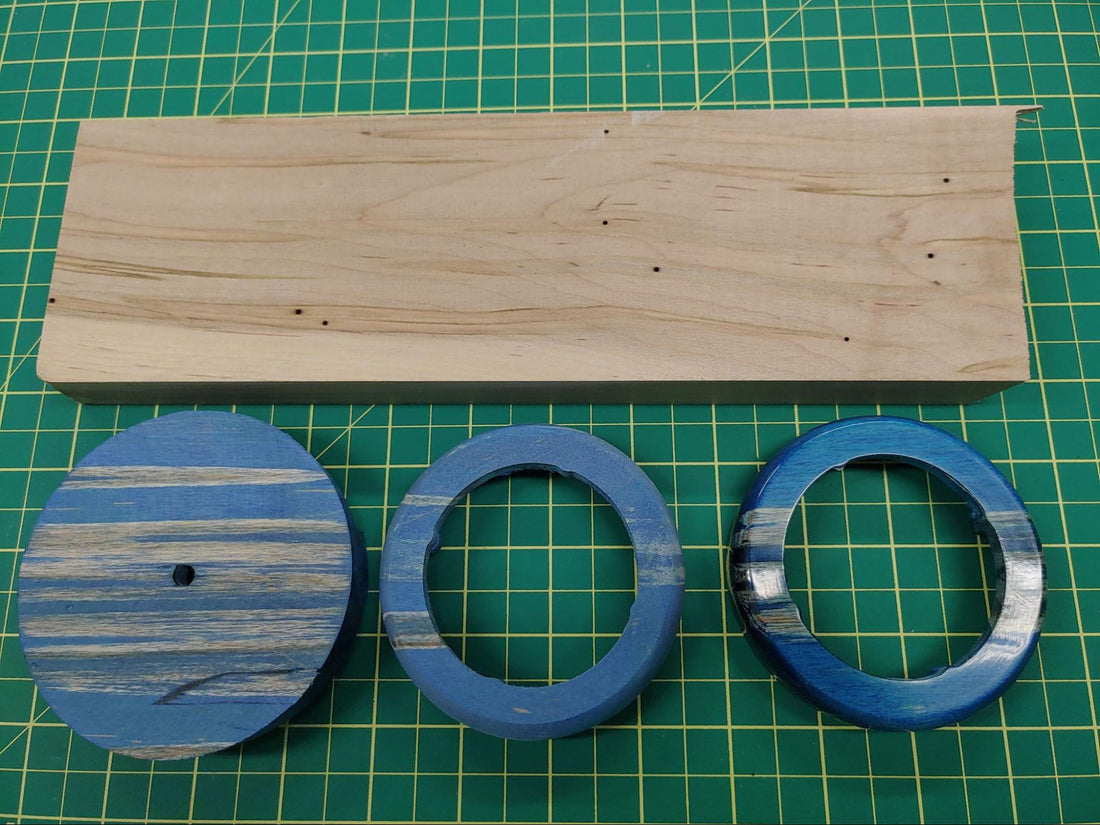
AM7 Design: The Case for Domestic Hardwoods—Grain and Colour Reimagined
Share
In today's market, the widespread use of imported woods has ironically made the "exotic" very ordinary. It's common to see products featuring woods like padauk, purpleheart, and zebrawood. However, this popularity often comes at a cost. Some species, such as cocobolo, now face endangerment due to deforestation and overharvesting.
There's no denying the visual appeal of these woods. The grain patterns of an exotic veneer can certainly elevate a speaker cabinet into a living room centerpiece. But here in North America, we have a wealth of remarkable domestic species that are frequently overlooked in audio equipment design. Many of these woods are already widely used in musical instrument craftsmanship, like spruce and cedar for piano soundboards and maple for guitars, proving their acoustic and aesthetic pedigree.
A primary reason for choosing woods like purpleheart is their vibrant heartwood colour. While impressive when new, this colour is often impermanent. Freshly cut purpleheart has a reddish-brown hue that matures into a vibrant purple after drying. Yet, over several years, it typically fades back to brown. While UV-inhibiting finishes can slow this process, any piece intended as a long-term heirloom will eventually lose its distinctive colour, ending up a generic brown. The same is true for other species like Pink Ivory and Katalox.
This impermanence suggests a better approach: instead of relying on a wood's innate but fleeting colour, we can achieve any desired hue by dyeing domestic species. Many of these woods have exceptional qualities, and dyeing offers a permanent colour solution that won't fade over time.
Consider maple alone. It offers a stunning array of grain patterns, including quilted, birdseye, and more, without the environmental footprint of importing lumber from thousands of kilometers away. Sourcing maple from local mills provides assurance that the wood is not linked to exploitation, habitat loss, or deforestation. It's a resource so abundant in Canada that it’s even on our national flag.

Curly maple, Image from The Wood Database

Birdseye maple. Image from The Wood Database
My personal favourite is ambrosia maple, the wood chosen for the AM7. Also known as ‘wormy maple,’ its distinctive spalting results from a completely natural process. Ambrosia beetles bore into the wood, introducing a symbiotic fungus that discolours it, creating unique patterns. (Admittedly, "wormy" isn't the most appealing name for headphones; the only "ear worms" you want are the songs you enjoy.)

Ambrosia maple. Image from The Wood Database
At Opal Audio, we enhance this beautiful wood by stabilizing it. Using dyed epoxy resin, we create a composite material by filling all the pores and air gaps inside the wood. Because the wood absorbs the resin and dye at different rates due to variations in density, we achieve the beautiful gradients seen on the AM7, from the wood's natural brown to teal and royal blue.

Stabilized, dyed, and finished ambrosia maple. Photo by author.
The variety inherent in maple alone is immense. Using different lumber, and through different colouring and finishing techniques, we can achieve grain patterns, figuration, and colours that rival the most exotic imports, like leopardwood and zebrawood.

Ambrosia maple lumber, a stabilized and dyed blank, a milled housing for an AM7, and a finished housing for an AM7. Photo by author.
I believe we have only begun to scratch the surface of what's possible with stabilizing domestic woods. There is no need to depend on potentially endangered imported species to create beautiful objects. The potential to craft exquisite equipment using the abundant resources available in our own backyard is truly endless.
